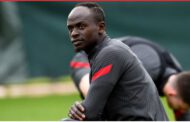Six days were all it took to dim Antonio Conte’s bright new dawn at Chelsea. Any momentum gathered by a promising first month of the new Premier League season has been utterly shattered by comprehensive defeats against top-four rivals Liverpool and Arsenal, as well as performances that highlighted many of the same flaws that undermined Jose Mourinho and Guus Hiddink last season.
With Chelsea already eight points adrift of Pep Guardiola’s rampant Premier League leaders Manchester City after six matches, Conte has much work to do in the coming days and weeks. ESPN FC takes a look at the five biggest lingering problems that the Italian must try and solve.
1. The defence
Conte knew this would be his most pressing challenge, and a desire to make Chelsea more solid has underpinned virtually every major decision he has made since his appointment: sanctioning John Terry’s one-year contract extension, driving the club’s lengthy and ultimately frustrating pursuit of defensive reinforcements from Serie A, signing N’Golo Kante and favouring the more combative pairing of Nemanja Matic and Oscar over Cesc Fabregas.
His efforts have been undermined by circumstances. Instead of acquiring his top transfer targets to bolster a defence that conceded 53 Premier League goals last season, the Chelsea hierarchy delivered compromise signings in the form of David Luiz and Marcos Alonso.
The absence of an established left-back means Cesar Azpilicueta cannot shift across to displace Branislav Ivanovic, who looks increasingly out of his depth. Gary Cahill’s performances have been declining for some time, Kurt Zouma is expected to resume full contact training at Cobham this week after seven months out of action and Terry will be 36 in December.
Without a more productive transfer window, Conte may have to get creative with his solutions — different combinations of personnel, a deeper defensive line or perhaps even a three-man defence flanked by wing-backs, as he trialled in Saturday’s otherwise pointless second half against Arsenal.

2. The Fabregas conundrum
After lobbying with every tool at his disposal to win a place back in Conte’s starting XI, it’s hard to imagine that Fabregas did his long-term prospects any good with his performance at the Emirates Stadium on Saturday.
While far from Chelsea’s worst performer on the night, the Spaniard was a positional passenger as his teammates tried and failed to withstand the early Arsenal onslaught and also failed to make any kind of significant impact on the ball, whether in the form of finding or supporting an isolated Diego Costa.
It was telling that Fabregas was the first man Conte withdrew as he shifted to a 3-4-3 early in the second half; the playmaker is still clearly not close to earning his head coach’s full trust.
Chelsea are a much more dangerous team with Fabregas rather than Oscar pulling the midfield strings, and the vulnerabilities he brings should not be felt too keenly against most inferior opposition. But Conte has to find a way to accommodate him in a working system first.
3. Eden Hazard’s role
Arsenal’s second goal brought back memories of Hazard’s worst moment as a Chelsea player, when he allowed Juanfran to burst forward unchecked and set up two of Atletico Madrid’s goals in a 3-1 Champions League semifinal win at Stamford Bridge in April 2014.
Mourinho publicly criticised Hazard’s defensive effort afterwards, straining the relationship between the pair. Conte refrained from doing the same at the Emirates Stadium on Saturday, despite his Belgian star having clearly failed to track a surging Hector Bellerin in the build-up to Theo Walcott’s 14th-minute tap-in.
Whether the result of accident or application, Hazard clearly can’t be relied upon to protect his full-back on a consistent basis. Yet as he showed in his PFA Player of the Year pomp only 18 months ago, the singular talent of Chelsea’s superstar winger makes his lapses worth indulging.
As with Fabregas, Conte’s challenge is to find a place for Hazard that minimises his defensive responsibilities. Perhaps the Belgian could play off Costa as a second striker in a 3-5-2 system or, more likely given his head coach’s public comments this season, as the left-sided attacker in a 3-4-3.

4. First-half sluggishness
The speed and totality of Chelsea’s collapse in the first half against Arsenal was extraordinary in any context, but it was also a continuation of what became a worrying theme of last season’s nightmare domestic campaign.
Chelsea led just 13 of their 38 Premier League matches at half-time last season. More often than not they emerged from the opening 45 minutes still needing to find a way to turn a match that was either deadlocked or going away from them. More often than not they failed.
Of the nine matches in which they trailed at half-time, Chelsea came back to win just once and draw just twice. Comebacks against Southampton at St Mary’s and Tottenham Hotspur at Stamford Bridge were memorable not just because of their significance, but because they were so rare.
So far this season only two of Chelsea’s 10 Premier League goals have been scored in the first half. They remain slow starters, allowing their opponents to settle and grow into matches or, worse, to take the initiative; against Liverpool and Arsenal they paid dearly for it.
5. Mental fragility
Chelsea’s capitulation last season was unprecedented for a Premier League champion, so it’s inevitable that the mental wounds inflicted will take time to fully heal. One of Conte’s first tasks has been to try and get this group of players to think like winners again, driven by ambition rather than crippled by fear.
Late victories against West Ham and Watford to begin the campaign suggested that Conte was already making significant progress in this regard. Even more recently, against Liverpool in the Premier League and Leicester City in the EFL Cup, Chelsea reacted reasonably well to going behind after remarkably passive performances in the first half.
But faced with a fast, fluid and confident Arsenal at the Emirates Stadium on Saturday, Chelsea crumbled as badly as at any time last season.
At times of real adversity it becomes clear that there are few natural leaders in this team beyond Terry, and the authority of the likeliest candidates — Ivanovic is vice-captain and Cahill has also worn the armband — is diminished by the fact that they are so regularly among the worst performers.
Until he gets the chance to bring strong characters into the team from outside it is difficult to see how Conte can solve this particular problem, beyond simply working to try and improve the form and confidence of his current senior squad members. But an answer must be found, because the Premier League is brutal and the tests will keep on coming.
Liam is ESPN FC’s Chelsea correspondent. Follow him @Liam_Twomey or onFacebook.














